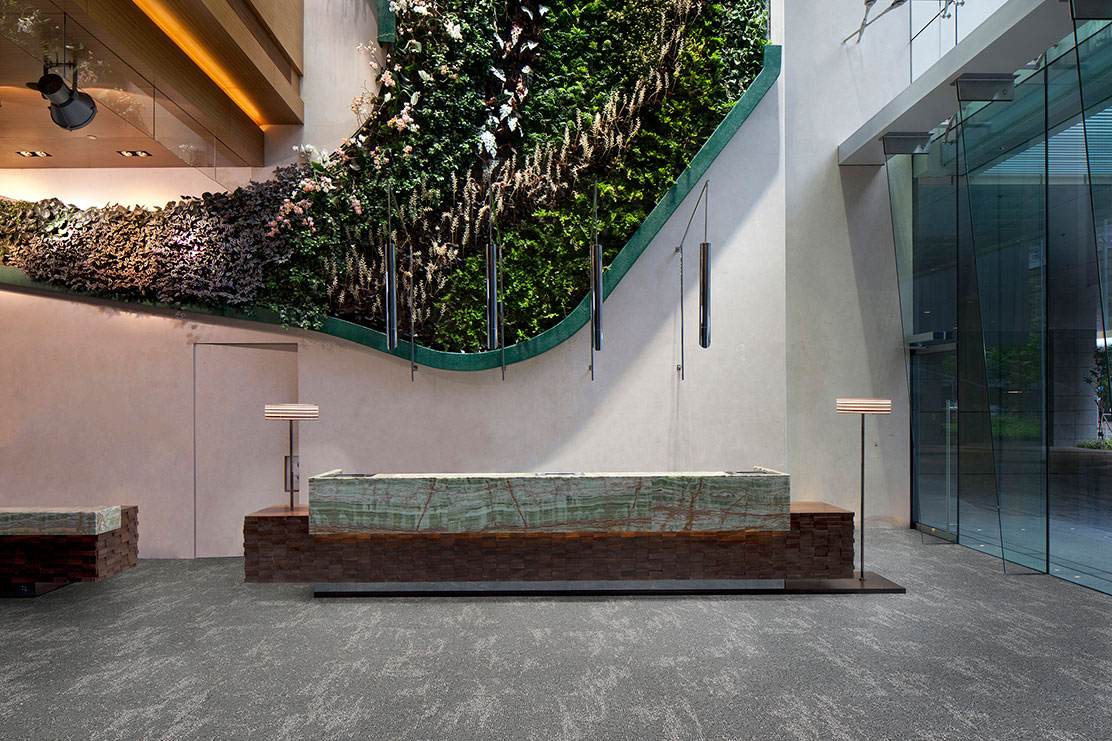A circular economy is the foundation of a sustainable society—one that minimizes the use of virgin resources, does not pollute our environment, protects human health, is regenerative where we have done prior damage, and brings us back to a more reasonable and sustainable use of our finite resources.
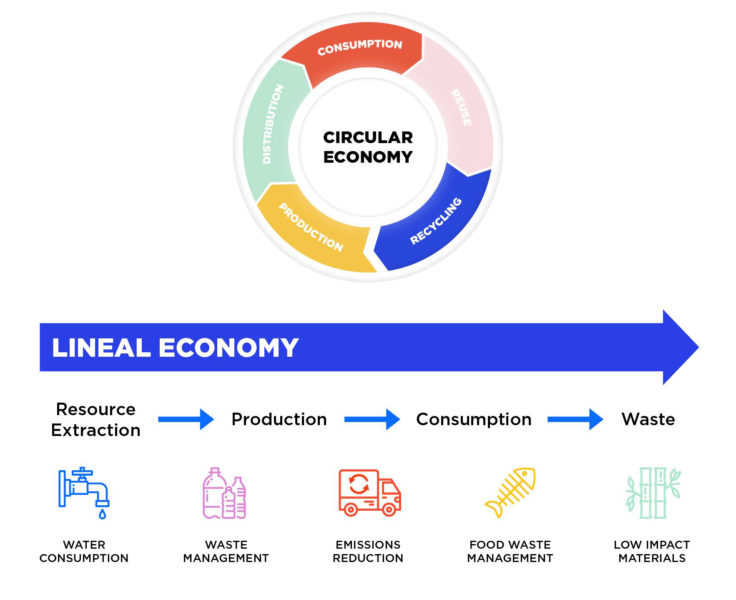
Courtesy of Aquafil
According to Architecture 2030, nearly 40% of global CO2 emissions come from built environments, and more emissions are forecasted as global building supply is expected to double by 2060 to accommodate unprecedented urban growth.
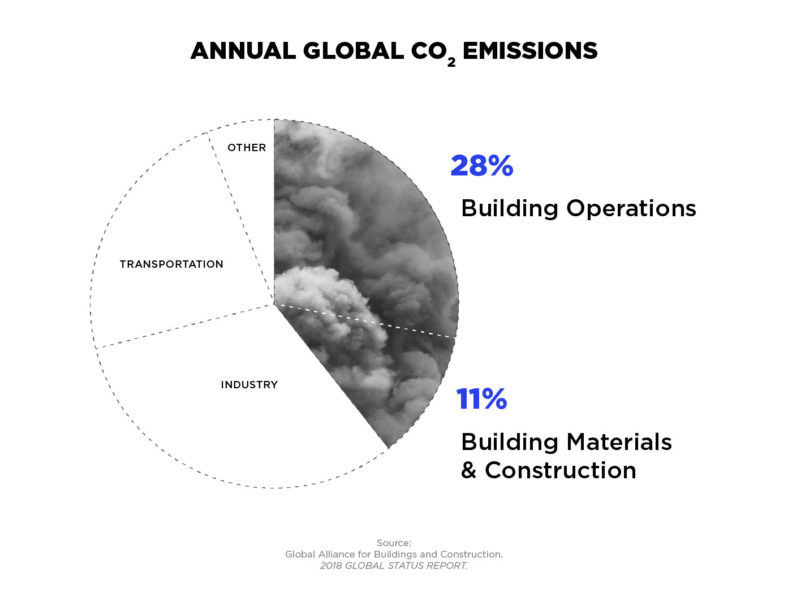
Courtesy of Aquafil
Sustainable building design and construction are more important than ever to help combat climate change. A major key to sustainable projects is optimizing building space and material use. We are finding that more and more owners and occupants want to see their built environments be as sustainable as possible, whether it’s a new build or a renovation.
One part of the solution is right under our feet, and California is leading the way.
Carpets hold a 60% share of the US flooring market, with 19 billion square feet sold per year. The Environmental Protection Agency estimates that about 5 billion pounds of carpet are discarded in landfills in the US every year. Most carpets are made primarily from finite resources in the form of oil-based plastics that could be recycled.
California is the first state in the nation that has legislation in place to increase the diversion and recycling of carpet. Since the California Carpet Stewardship Program was signed into law in 2010, carpet recycling in the state has increased to 21% versus less than 4% of carpet being recycled in the rest of the US.
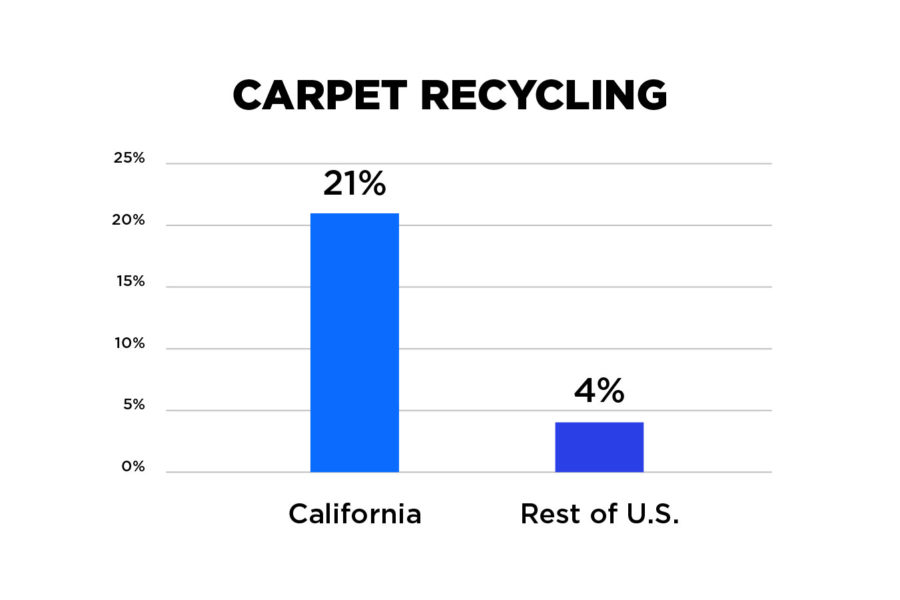
Courtesy of Aquafil
What can the design-build industry do to ensure we take a more sustainable approach to our projects with carpeting?
1. Specify sustainable, recyclable materials in new projects.
Not all flooring is recyclable. When you are building a new project, work with the architects and designers to make sure the flooring you are installing is recyclable.
2. Make sure existing carpet is recyclable before you start renovating.
Carpet collection companies can look at samples of existing carpet to verify whether or not it is recyclable. If you are renovating an existing building, make sure you have the carpet checked before demolition, as carpet contaminated with demolition debris cannot be recycled.
3. Owners should require, encourage, and incentivize the recycling of materials used in projects.
Because California is the only state with regulatory requirements as of today, owners can have a major impact on their projects by requiring planning for the recycling of a building’s materials throughout its lifecycle, including carpeting.
4. Demo companies and builders, recycle what you can!
Even if an existing building has carpeting in it, you can work with carpet collection sites to determine what sections are recyclable and make sure it gets demoed properly. In fact the dumpsters provided by carpet collection companies can often be more cost-effective than a traditional waste management company.
5. Education, education, education.
We have grown up knowing that plastic bottles should be recycled instead of thrown in the trash. Homeowners know not to dump paints down the drain or throw toxic paint cans in the trash. Let’s make the knowledge and understanding of how to ensure carpeting gets recycled become common knowledge.
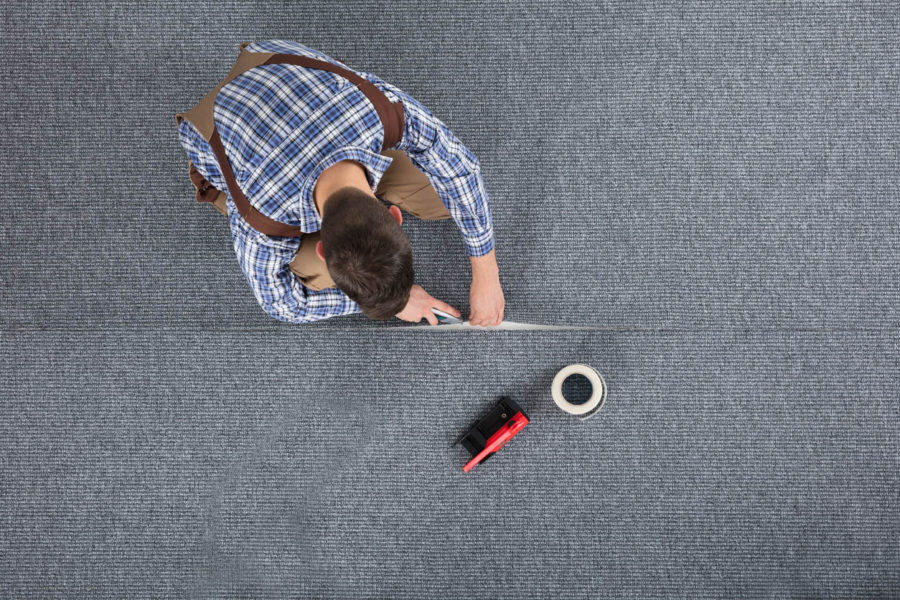
Once carpet is properly collected and recycled, it can be turned into raw material and reused for a variety of new products. Photo courtesy of Aquafil
For example, at Aquafil Carpet Recycling, we collect old carpets that are then disassembled to create ECONYL® regenerated nylon fibers and pellets that are used by more than 2,000 brands around the world to create the next generation of sustainable carpets and make new products that include clothing, chairs, handbags, sneakers, sunglasses, and tables.
We have created our own circular supply chain that includes carpet collection, recycling, and then manufacturing of regenerated nylon, which is infinitely recyclable and performs just as well as nylon made from oil. Each Aquafil Carpet Recycling plant can process up to 36 million pounds of carpet annually, which is equal to the total weight of 27 Airbus A380 planes.
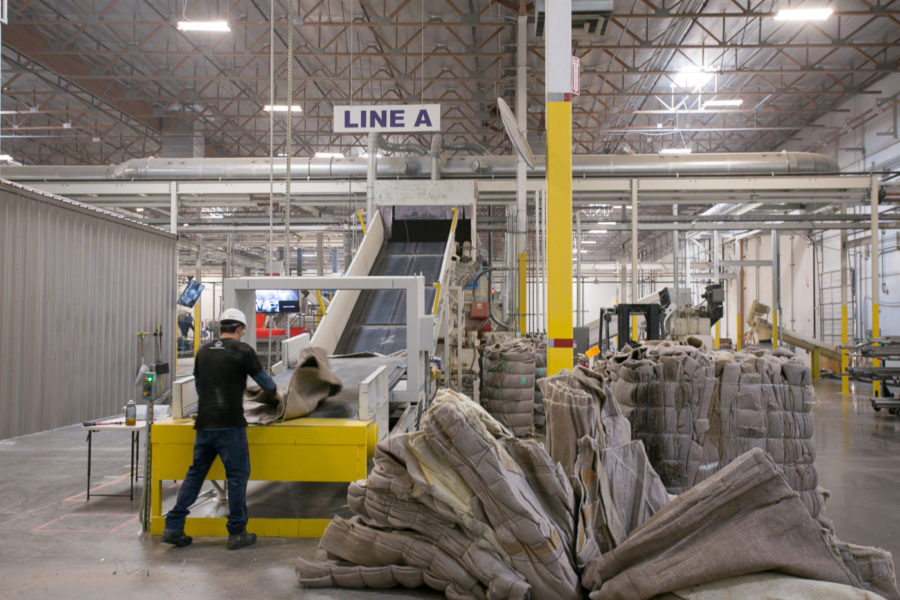
Carpets being recycled at the Aquafil Carpet Recycling plant in Phoenix, Arizona. Photo courtesy of Aquafil
We all have an important role to play in the circular economy. California has taught us that with some focus and effort, we can collect and recycle carpeting to make built environments more sustainable throughout their lifecycle. It does take more time, attention and planning, but isn’t our planet worth it?
The change starts with each of us. We hope that our industry is up to the challenge.

